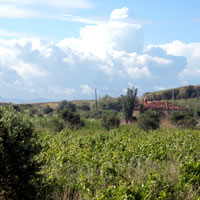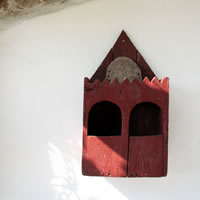Bozcaada First Glance
Bozcaada (pronounced boz-DJA-ah-dah) is a small island in the
north Aegean, a district of Çanakkale province. The third biggest island
in Turkey, it is situated close to the entrance of the Dardanelles. Its
ancient name is Tenedos.
The
settlements are clustered around the town centre, in the north east of
the island. This is the only village on the island. It has an area of
37.6 km2 and is 38 km in circumference.
The island is only 6 km
away from the ferry-boat pier on the main land. Main transportation is
provided by ferries, which can accommodate cars. The journey lasts for
half an hour on average. Although ferries leave to and from the island
7-8 times a day in the summer season, in the winter this drops to 3
times a day.
In summer of 2009, passenger-only fast ferry service to Bozcaada direct from Çanakkale started.
The
whole of Bozcaada is a natural and historical preservation and
conservation site. No archaeological expeditions have been carried out
on the island so far. Yet, it has a rich history carrying the traces of
all those diverse civilisations that set foot on it. Bozcaada formerly
known as Tenedos whose name is mentioned many a time in mythology,
attracts attention not only with its nature but also with its rich
history.
The population of Bozcaada where for five hundred years
the Turks and the Greeks(Rum) lived side by side is around 1500. There
has been migration to and from the island throughout its history. The
Greek population of the island is now only around 25-30 while the number
of people who come from big cities to live on the island increases day
by day. Together with the tourists that come in the summer, the
population of the island varies between 5000 – 10 000 people.
The
means of livelihood on the island is viticulture, viniculture, fishing
and tourism. Viticulture and viniculture are old traditions on the
island. There is virtually no inhabitant who does not own a vineyard, or
who does not know how to make wine.
Since Bozcaada is on the
route of fish migrations, fishing has employed many for a long time.
Many different kinds of fish can be caught around the island. Squid and
octopus which are both signs of clean waters are particularly abundant,
and thus have become symbols of the island.
Tourism which has
started developing recently is advancing under close watch. There is
restricted permission for construction on the island and the effort to
maintain dominance of nature comes first.





























